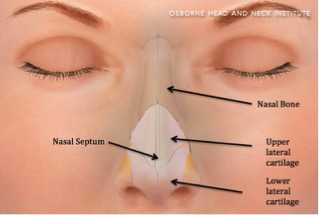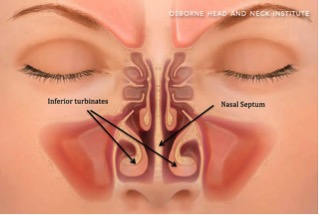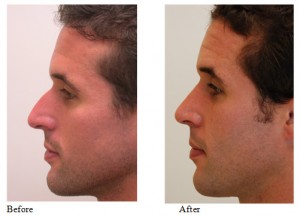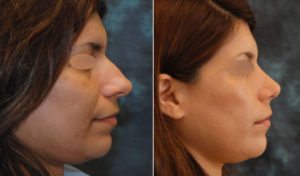
- The Myth of “Ethnic Rhinoplasty” - September 25, 2017
- Hereditary Hemorrhagic Telangiectasia - May 25, 2016
- Hereditary Hemorrhagic Telangiectasia: Septal Perforation and Nose Bleeds - May 23, 2016
- Hereditary Hemorrhagic Telangiectasia: Epistaxis and Septal Perforation - May 18, 2016
- Wegener’s Granulomatosis: Autoimmune Disease and Multi-Focal Septal Perforation - May 9, 2016
- Kyle Korver: Facial Injury and Nasal Fracture - March 24, 2015
- Russell Westbrook: Facial Injury and Surgery - March 5, 2015
- Mega-perforation: Pushing the Limits of Septal Perforation Repair - November 26, 2014
- Septoplasty Complication and Septal Perforation - November 24, 2014
- Nose Picking (Rhinotillexis) and Septal Perforations: Why I should stop picking my nose…? - November 24, 2014
- Nasal Fractures, Septal Hematoma, and Septal Perforation: Simultaneous Rhinoplasty and Septal Perforation Repair - October 1, 2014
Why can’t all non-Caucasian noses be grouped together as ethnic?
Cosmetic surgery has become less taboo and more pop-culture in the 21st century. Members of various racial/ethnic groups, who were once vilified for having cosmetic procedures have seen more acceptance of cosmetic surgery within their individual groups. With an increase in racial/ethnic groups seeking rhinoplasty, there is a new focus on offering patients a more natural looking result that is harmonious with the aesthetics of their ethnic/racial backgrounds. This shift has resulted in the concept of an “ethnic” rhinoplasty (i.e. rhinoplasty designed for the non-Caucasian).
The term ethnic rhinoplasty validated concerns that the “standard” rhinoplasty typically resulted in unnatural surgical noses. The major flaw in the term “ethnic” rhinoplasty is that it clumps individuals into two major groups, Caucasian and non-Caucasian, without recognizing the differences between the noses of each racial/ethnic group. Additionally, the term ignores differences in what is acceptable within a culture and how the nose is balanced with other facial features. Because the anatomical structure of the nose and the desired outcome of rhinoplasty differs between racial groups, there truly is no such thing as an “ethnic” nose.
How does the nose get its shape?
The anatomy of the nose is described in thirds. The upper third is the nasal bone. The middle third is the upper lateral cartilage. The lower third is the lower lateral cartilage. While these divisions are present in every noses, the composition, shape, and size of these components differ significantly between races and alter the shape of the nose.
- Bone and cartilage control nose shape
- Bone and cartilage can differ in composition, size, and shape
- Differences in bone and cartilage alter the shape of the nose


How is a Caucasian nose shaped?
The Caucasian nose is surrounded by thin skin. The nasal bone is long and the upper lateral cartilages are strong with a narrowed trapezoid shape. The nasal tip cartilage is strong and defined with a narrow base. The nostrils are oval shaped. The columella, the strip of tissue that separates the nostrils on the base of the nose, is long to average when compared to the noses of other races. The nasolabial angle, formed in the crease under the nose, is obtuse to average when compared to the noses of other races.
- Surrounded by thin skin
- Long nasal bone
- Strong cartilage
- Narrow trapezoid shape
- Oval shaped nostrils
- Long columella separating nostrils on base of the nose
- Obtuse nasolabial angle in the crease under the nose
- Very defined
How is a African nose shaped?
The African nose has thinner and looser cartilage compared to the “standard” Caucasian nose, giving it a wider appearance. The columella is short and the nasal bone is broad and flat. The nose is surrounded with thick, sebaceous skin and the cartilage is covered with fibrofatty tissue. The nostrils are oval shaped and flare outward slightly. The overall appearance of the nose may be more bulbous with poor definition.
- Surrounded by thick, oily skin
- Thin/loose cartilage
- Cartilage covered by fibrofatty tissue
- Wide appearance
- Outward flaring, egg shaped nostrils
- Short columella
- Broad, flat nasal bone
- Large and bulbous
- Poor definition
How is a Hispanic nose shaped?
Individuals with a Hispanic ancestry predominately have normal to moderately thick oily skin. The nasal bone is short and the cartilage in the nose is weak, and unsupported, resulting in an undefined and wide nose. The columella is short to average and the nasolabial angle is acute. The nasal bones are short and wide creating a weak framework. The base of the nose is wide with horizontal shaped nostrils.
- Hispanic/Mixed race
- Surrounded by thick, oily skin
- Weak/unsupported cartilage
- Short nasal bone
- Wide, undefined appearance
- Short-average columella
- Average-acute nasolabial angle
- Horizontal shaped nostrils
How is an Asian nose shaped?
Individuals of an East Asian ancestry have thick skin and a significant amount of fibrofatty tissue. It is set deep into the face and comparatively lower in the face than the “standard” Caucasian nose. The nasal bone is short, wide, and flat. There is an acute nasolabial angle with nostril flaring. The columella is short and the nose is wide and bulbous with poor tip definition. The nose is foreshortened and contains weak cartilage.
- Eastern Asian
- Thick skin
- Significant fibrofatty tissue
- Set deep and lower in the face
- Short, wide, flat nasal bone
- Acute nasolabial angle
- Flaring nostrils
- Short columella
- Wide/bulbous short nose
- Slight definition
- Weak cartilage
How is a Middle Eastern nose shaped?
The nose of Middle Eastern individuals is surrounded by moderately thick oily skin. The lower third of the nose is undefined, but it has a very full supratip. A tension nose may be present with large overprojected nasal bones, a dorsal hump, and wide columella base. The nasolabial angle is obtuse and the cartilage of the nose is very strong. The nostrils may be slightly flared. The nose is fixed comparatively higher in the face than noses of other races and is very wide.
- Surrounded with moderately thick, oily skin
- Undefined lower third
- Full supratip
- Low, hanging nasal tip
- Obtuse nasolabial angle
- Strong nasal cartilage
- Flared nostrils
- Overprojected nasal bone
- Higher fixed nose
- Very wide nasal bones
The differences demonstrated between the noses of each race, make clumping of ethnic groups into one group invalid when addressing the concerns and overall success of rhinoplasty in various racial/ethnic groups. Even the groupings within this article are quite general; however, it is more accurate than speaking of an “ethnic” nose and “ethnic” rhinoplasty. Within these groups, there are also differences. The race of the patient is important in ensuring cultural aesthetics, facial harmony, and the overall success of the procedure. Surgeons who specialize in rhinoplasty of a certain race understand what looks natural on an individual of that race and understand the average anatomy of noses of that race. This knowledge increases the probability of achieving a natural looking nose after surgery for all individuals. Regardless of race, every rhinoplasty should be specific to the patient.
To learn more about rhinoplasty or facial plastic surgery, visit: www.ohninewnose.com.



